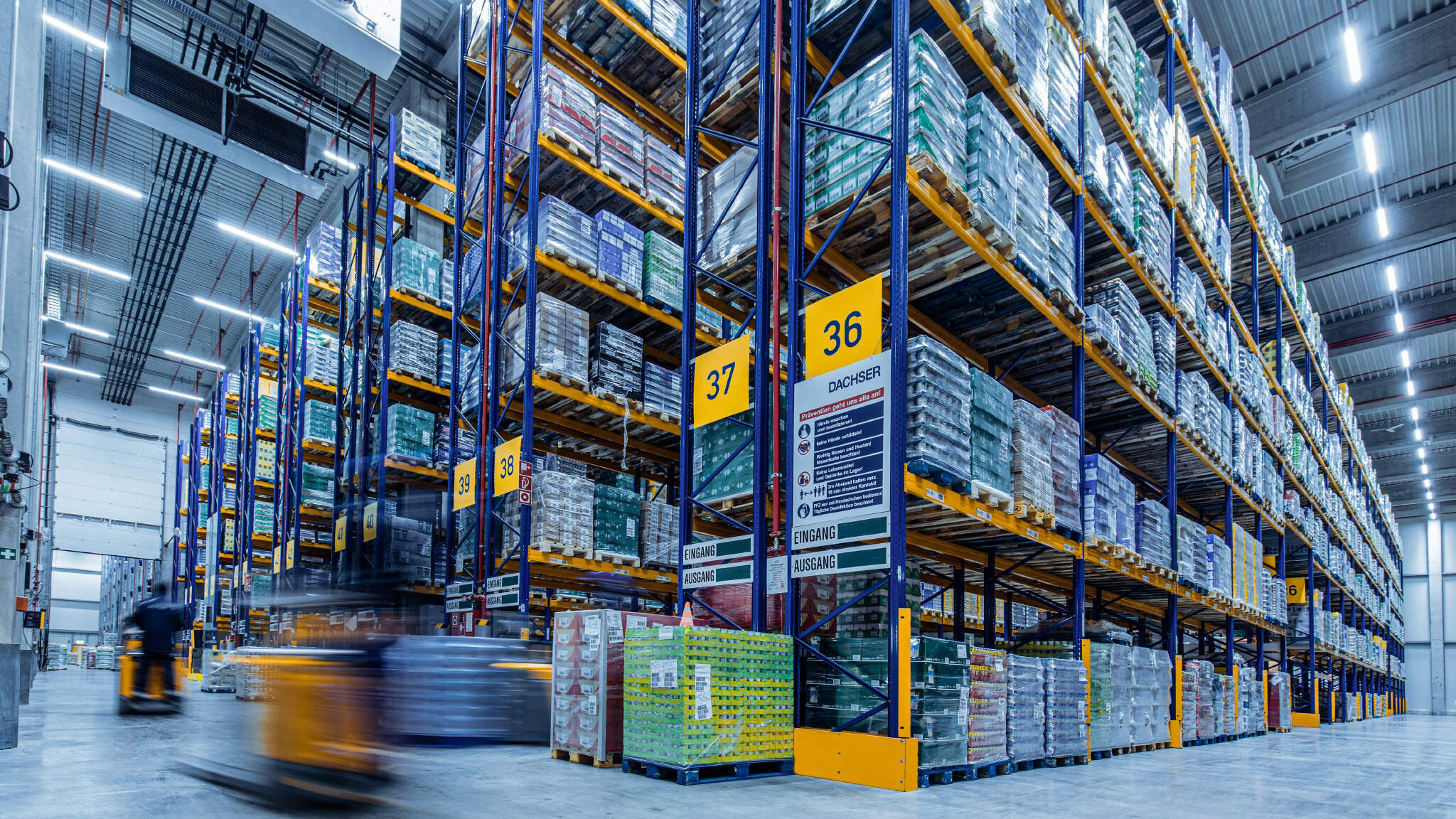Ready to turn insight into action?
We help organisations transform ideas into measurable results with strategies that work in the real world. Let’s talk about how we can solve your most complex supply chain challenges.

The Critical Importance of Emergency Response Supply Chain Preparedness for Federal and State Agencies in Australia: Lessons from Cyclone Alfred and the Role of Trace Consultants
Emergencies strike without warning. Whether it’s a bushfire ravaging regional areas, a cyclone devastating coastal communities, or a public health crisis unfolding rapidly, the ability of emergency services to respond promptly and effectively is paramount. Lives hang in the balance, and the difference between chaos and control often rests on the resilience of the emergency response supply chain—a complex network ensuring resources, personnel, and equipment are delivered where and when they’re needed most. For Australia’s federal and state agencies, maintaining robust preparedness across their networks, workforce, and inventories is not merely a logistical priority; it is a fundamental responsibility.
This article examines why emergency services must prioritise supply chain readiness and preparedness. It explores the three key pillars—networks, workforce, and inventories—that underpin an effective response, identifies vulnerabilities exposed by events like Cyclone Alfred in March 2025, and outlines strategies to enhance resilience. Additionally, it highlights how Trace Consultants (www.traceconsultants.com.au), an Australian supply chain consultancy, can support agencies in strengthening their emergency response capabilities.
The Imperative of Supply Chain Preparedness
Emergency services—encompassing fire brigades, ambulance services, police forces, and federal bodies like the National Emergency Management Agency (NEMA)—depend on a seamless supply chain to operate during crises. Unlike commercial supply chains driven by profit, these systems are designed to protect lives and safeguard communities. A delay in delivering medical supplies, a shortage of personnel, or a misplaced stockpile can escalate into a critical failure with far-reaching consequences.
Australia’s vast geography and exposure to natural disasters heighten these challenges. The recent Cyclone Alfred, which struck Queensland and New South Wales on 8 March 2025, exemplifies this reality. As reported by The Guardian, the cyclone hit the Moreton Bay islands off Brisbane, leaving 20,000 households without power as it downgraded to a tropical low, with winds and rain complicating response efforts. This event joins a litany of past disasters—such as the 2019-2020 Black Summer bushfires and the 2022 floods across Queensland and NSW—underscoring the need for coordinated action between federal agencies like NEMA and state organisations, including Fire and Rescue NSW and Victoria’s Country Fire Authority (CFA). Such coordination relies on a resilient supply chain and a high state of preparedness.
The stakes are immense. A 2023 USAID Global Health Supply Chain Program report emphasised that robust emergency supply chain management is essential for resilience, enabling agencies to anticipate needs, respond swiftly, and recover efficiently. With climate change intensifying the frequency and severity of disasters in Australia, enhancing these systems is an urgent national priority.
The Three Pillars of Emergency Response Preparedness
Effective supply chain preparedness rests on three interdependent components: networks, workforce, and inventories. Weakness in any one area can compromise the entire system.
1. Networks: The Framework of Coordination
The network forms the backbone of the emergency response supply chain, encompassing warehouses, transportation routes, communication systems, and inter-agency collaboration. It ensures resources reach frontline responders and information flows seamlessly across jurisdictions.
An optimised network minimises delays and enhances accessibility. During Cyclone Alfred, power outages and disrupted access highlighted the importance of pre-positioned resources. The Guardian noted the storm’s impact on infrastructure, which delayed emergency efforts. Strategic warehouse placement near vulnerable areas, as employed by defence logistics systems, could have expedited the delivery of generators or temporary shelters. By contrast, vulnerabilities such as reliance on single transport routes (e.g., flood-prone roads), lack of real-time data integration, and fragmented agency coordination can lead to inefficiencies or critical gaps in coverage.
2. Workforce: The Human Foundation
The workforce—paramedics, firefighters, police officers, logistics coordinators, and support staff—is the driving force behind emergency operations. Their training, readiness, and availability determine the effectiveness of resource deployment.
Preparedness requires a workforce that is both skilled and adaptable. Cyclone Alfred stretched responders to their limits, with fallen power lines and inundated roads creating chaotic conditions. The COVID-19 pandemic similarly exposed workforce vulnerabilities, with healthcare staff facing shortages and inadequate training for large-scale outbreaks. Surge capacity—the ability to rapidly scale personnel—is vital, a lesson reinforced by the U.S. Government Accountability Office’s 2024 critique of workforce planning deficiencies in the Administration for Strategic Preparedness and Response (ASPR).
Key challenges include fatigue, insufficient training for specialised scenarios (e.g., hazardous material incidents), and uneven workforce distribution. Building resilience demands redundancy, clear role delineation, and continuous professional development.
3. Inventories: The Material Lifeline
Inventories—personal protective equipment (PPE), medical supplies, fuel, food, water, and machinery—provide the resources emergency services rely upon. Effective inventory management ensures these items are available, accessible, and functional when needed.
Cyclone Alfred underscored this need, as power disruptions left communities vulnerable; pre-stocked generators or emergency kits could have mitigated the impact. The early stages of COVID-19 revealed similar fragility, with global supply chain disruptions causing shortages of masks and ventilators in Australia. Pre-positioning critical supplies, forecasting demand based on risk profiles, and maintaining stockpile quality are essential. However, many agencies adopt a “just-in-time” approach, which offers little buffer against sudden demand surges.
Risks include poor visibility of stock levels, inadequate prioritisation of essential items, and limited supplier coordination. Without reliable inventories, even the strongest networks and workforce cannot deliver.
The Consequences of Inadequate Preparedness
When supply chain preparedness falters, the fallout is profound. Communities endure prolonged service disruptions, responders face burnout from operating without sufficient support, and recovery efforts stall, incurring significant economic costs. Cyclone Alfred’s impact on 20,000 households illustrates the immediate toll, while the Black Summer bushfires, with losses exceeding $10 billion, reflect the broader economic and social ramifications of delayed resource deployment.
Beyond operational impacts, inadequate preparedness undermines public confidence. Australians expect emergency services to respond decisively, and failures—whether logistical or perceived—erode trust in government institutions. In a disaster-prone nation like Australia, this is a risk with long-term implications.
Strategies for Strengthening Preparedness
Enhancing emergency response supply chain preparedness requires strategic planning, technological integration, and collaboration. Below are evidence-based approaches:
Network Optimisation
- Strategic Positioning: Leverage geographic information systems (GIS) and historical disaster data to locate warehouses near high-risk zones, such as cyclone-prone coastal regions.
- Transport Resilience: Collaborate with police and traffic authorities for real-time route monitoring, enabling adaptive logistics during crises like Cyclone Alfred.
- Integrated Data Systems: Develop shared platforms that consolidate weather, operational, and logistical data for cohesive decision-making.
Workforce Enhancement
- Specialised Training: Implement scenario-based programs (e.g., cyclone response) to build adaptability among personnel.
- Surge Capacity Planning: Establish a reserve workforce, drawing on defence sector models, to mobilise additional staff rapidly.
- Wellbeing Support: Provide mental health resources and rotational staffing to sustain workforce resilience during prolonged operations.
Inventory Management
- Pre-positioning: Stockpile critical resources based on regional risk assessments, such as power restoration equipment in cyclone zones.
- Predictive Analytics: Utilise forecasting tools to anticipate demand, balancing preparedness with cost efficiency.
- Supplier Partnerships: Forge agreements with private-sector suppliers to ensure rapid replenishment during emergencies.
These strategies are grounded in practice. Defence logistics excel in scenario planning and lean inventory management, while New Zealand’s healthcare system demonstrates workforce flexibility through cross-training.
Trace Consultants: A Strategic Partner in Preparedness
Trace Consultants (www.traceconsultants.com.au), an Australian boutique supply chain consultancy, offers specialised expertise to bolster emergency response capabilities. With experience across government, defence, and emergency services, Trace is well-positioned to assist federal and state agencies in addressing the challenges exposed by events like Cyclone Alfred.
How Trace Consultants Can Assist
- Network Design and OptimisationTrace conducts detailed assessments of warehouse locations, transport networks, and inter-agency coordination, identifying inefficiencies and proposing tailored solutions. Following Cyclone Alfred, they might recommend relocating a distribution centre closer to Moreton Bay or integrating real-time traffic data to enhance logistics resilience.
- Workforce DevelopmentTrace provides training and planning services to strengthen workforce readiness. Their programs equip responders for diverse scenarios, while surge capacity strategies ensure adequate staffing during crises. Their government-sector experience informs capability-building initiatives that enhance long-term resilience.
- Inventory ManagementTrace excels in demand planning and inventory optimisation, identifying critical supplies (e.g., generators post-Alfred), forecasting needs, and implementing efficient stock systems. Their sustainability focus also aligns with modern priorities, reducing environmental impact while maintaining operational readiness.
- Holistic Supply Chain StrategyTrace reviews end-to-end processes—procurement, warehousing, transport—and benchmarks them against best practices. Their Sales & Operations Planning frameworks enable agencies to prioritise resources effectively, such as power restoration equipment during a cyclone.
- Scenario Modelling and ImplementationTrace’s scenario modelling simulates disaster scenarios, developing actionable plans tailored to specific risks. Their hands-on implementation support ensures strategies translate into measurable outcomes.
Proven Expertise
Trace’s insights, detailed in blog posts like “Bolstering Australia’s Emergency Response” on their website, demonstrate their deep understanding of these issues. Their work with government and defence clients has delivered streamlined operations and improved service delivery—expertise directly applicable to emergency services.
For instance, a state emergency agency partnering with Trace could benefit from a reconfigured network of pre-positioned resources, a workforce trained for rapid deployment, and an inventory system responsive to cyclone risks—all outcomes that could have mitigated Alfred’s impact.
A Call to Action
Cyclone Alfred serves as a sobering reminder: preparedness is non-negotiable. As climate change amplifies Australia’s disaster risks, federal and state agencies must adopt proactive, integrated approaches to supply chain management. Robust networks, a capable workforce, and reliable inventories are the foundation of effective emergency response.
Trace Consultants offers a proven pathway to achieve this. Their tailored, outcome-focused services empower agencies to protect communities with confidence. Agency leaders are encouraged to visit www.traceconsultants.com.au and engage Trace’s expertise to build a more resilient future. In the face of the next disaster, preparedness today ensures resilience tomorrow.
Ready to turn insight into action?
We help organisations transform ideas into measurable results with strategies that work in the real world. Let’s talk about how we can solve your most complex supply chain challenges.








